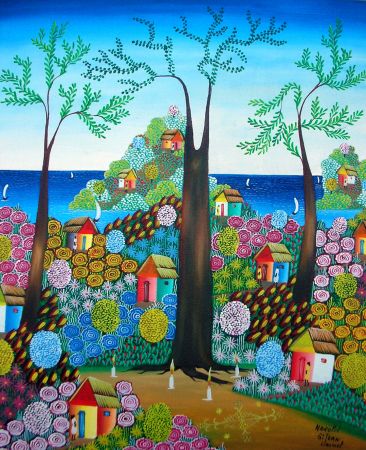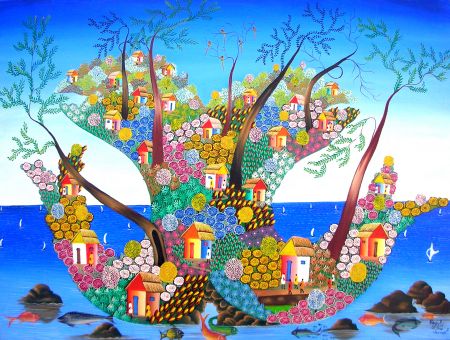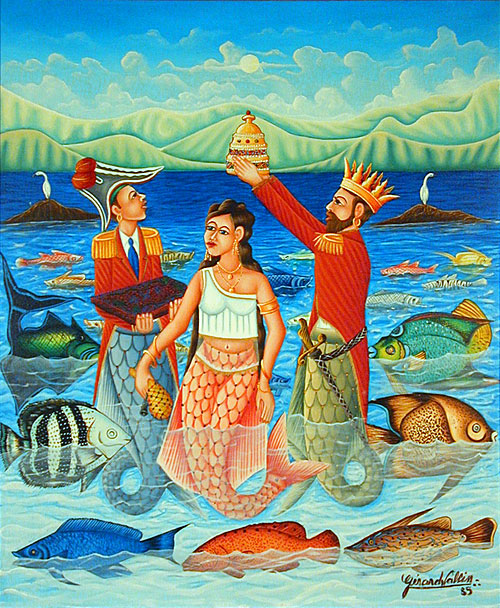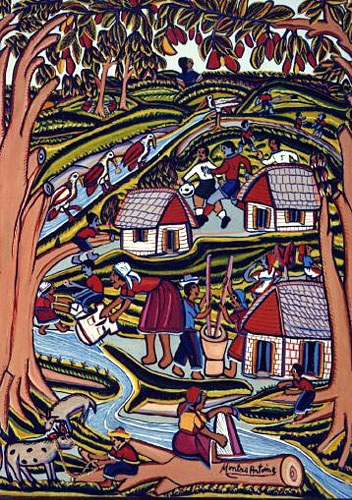Its the presence of the body in a state of decomposition, as locale of transgression that places the tropical tragedy of Haiti at the center of an imaginary contemporary world; marked by its upright and righteous treatment of the human debris and the cult of the organic. In front of a televised world, the country itself appears as a cinematic set; the programming part of culture of consumption and permanently ready on demand, its narrative at our disposal and an in turn, disposable.
There is a certain conviction, that Haiti is the only example to have exploded into pieces the false and contrived imagery of the natural disaster; to dynamite the codes of representation of the public suffering and the dead beyond the accepted and ingrained archetypes. The only, by which must be created, by choice or by necessity, a terminology to describe these new works of destruction and survival. Haiti, the republic of suffering, approaches the military metaphor, of both the erotic and poetic language of conquest and re-conquest of a land lost or ceded to an enemy.
In front of such structural and symbolic violence, its people can take refuge in the posture implied by the anger of an emanicipated people, whose own personal reponsibility can be channeled towards their public represetatives in an effort to topple the order of things that regiments their own links to domination. A new social solidarity introduces dynamic contradictions vis a vis public authority temporarily dispossessed of it regal mandate.The people, in spite of, and because of their distress, propose the elements lending towards a re-appropriation of public space, a form of re-colonization. The tent cities are the heart of a collective management that is shaping their world in the image of their singular experience. The cities are deserted and the countryside fills up, creating new spaces.
It is inevitable when discussing Haiti, to not be concerned with racism and colonialism, and in light of the quake, unlike Pat Robertson claiming their destiny was sealed by a pact with he devil,his veiled form of racism with the devil as metaphor, to perhaps look at Haiti instead, from the perspective of Nietzsche’s eternal law of recurrence. Understanding recurrence solely as mere identity imposes certain limits, and this is no different in nationalism and racism. For Gilles Deleuze the Eternal Return implies difference and becoming as basic principles that split the very heart of being, and thus diversity and multiplicity occur and recur. It is but the movement that produces everything that differs, and thus ”the synthesis of becoming and the being […] is affirmed in becoming”
”According to Gilles Deleuze’s interpretation of Friedrich Nietzsche’s famous concept of »eternal recurrence« it is not the »same«, but rather it is the difference, multiplicity and becoming that »return«: these are at the heart of the need for a reconsideration and re-interpretation of the Eternal Return. The Deleuzean reading of Eternal Return should take the concept of from its commonly understood sense of a perpetual and ceaseless return of the same, and should open it up to the potentiality of its reading as the return of the difference: »It is not the same which returns, it is not the similar which returns; rather, the Same is the returning of that which returns – in other words, of the Different; the similar is the returning of that which returns – in other words, of the Dissimilar.
Deleuze’s unorthodox reading of eternal recurrence leads to a slightly different understanding of the cyclical conceptualisation of time and history from the traditional cyclical theories. …I refer here to Deleuze’s warning about the danger of the simplified interpretation of the Eternal Recurrence concept as a mere historical phenomenon. In Deleuze’s view one should explicitly repudiate:
” The naïve reading of Nietzsche that envisages eternal return
a doctrine proclaiming the infinite recurrence of every historical moment in exactly the same order throughout eternity. The perversity of this naïve reading, argues Deleuze, is that it converts Nietzsche’s vision of being as the endless becoming of differential forces into a simple principle of ’identity’ ” ( Suzana Milevska)
With Haiti, the scenario fits Deleuze’s theory of racism as the white man’s claim that never operates by exclusion, or by the designation of someone as ”Other”. It is instead in primitive societies in which the stranger is grasped as an ”other”. Racism, to Deleuze operates by a determination of degrees of deviance in relation to the white-man face, which endeavors to integrate non-conforming traits into, ” increasingly eccentric and backward waves, sometimes tolerating them at given places under given conditions, in a given ghetto…”
From the viewpoint of racism, to Deleuze and Guattari, there is no exterior, there are no people on the outside. There are only people who should be like the dominant group, and whose crime it is not to be. The dividing line is not between inside and outside but rather is internal to simultaneous signifying clauses and successive subjective choices. ”Racism never detects the particles of the other; it propagates waves of sameness until those who resist identification have been wiped out. …the cruelty is equalled only by its incompetence and naivete”
In less than one minute the moral scandal exploded in the eyes of the world. Haiti’s ”debt of independence” , or extortion by France from 1825-1972, in exchange for diplomatic recognition, was 23 billion Euros in current value, and paid for by the poor as a form of feudal tax on the capital of their labors. Still, the disdain for reality makes the disaster in no small measure, clearly a human disaster. Negligent construction and insupportable population density. Joel Des Rosiers, calls this disregard for the real an energetic and uncontrollable resistance on the part of many rooted in an enlarged sense of ego, ” it englobes an uninterrupted activity. The people drink, walk, buy, lose themselves in sex, …it is impossible to convince these passer-byes, real human machines, to stop, and renounce at their all powerful esteem of themselves.”
Des Rosiers has called the treatment of the dead in Haiti a theatre of cruelty, and at the literal heart of an insupportable denial of humanity, which takes the form of absolute evil. The deceased body undergoes a transformation into objects of revulsion,abandoned and thrown pell mell into common graves, without identity and ritual. This preeminence of the inanimate, piles like cord wood in public space, raises the inevitable question of their relation to the soul and spirit that inhabits them.
According to Des Rosier, the vision of horror, its tremendous traumatism, could act as a catalyst to change the culture; the flash of the quake coinciding for many as a mystical experience, a black ecstasy, that will enlarge their thought process regarding mortality and eternity. ” I saw them leave their tombs, after eight days in a form of purgatory, without air or food, singing praises to the glory of the Spirit. Their faces grey, powdered, but sanctified, brilliant in their glow of a last chance before they rejoin the anonymous masses”














 COMMENTS
COMMENTS



